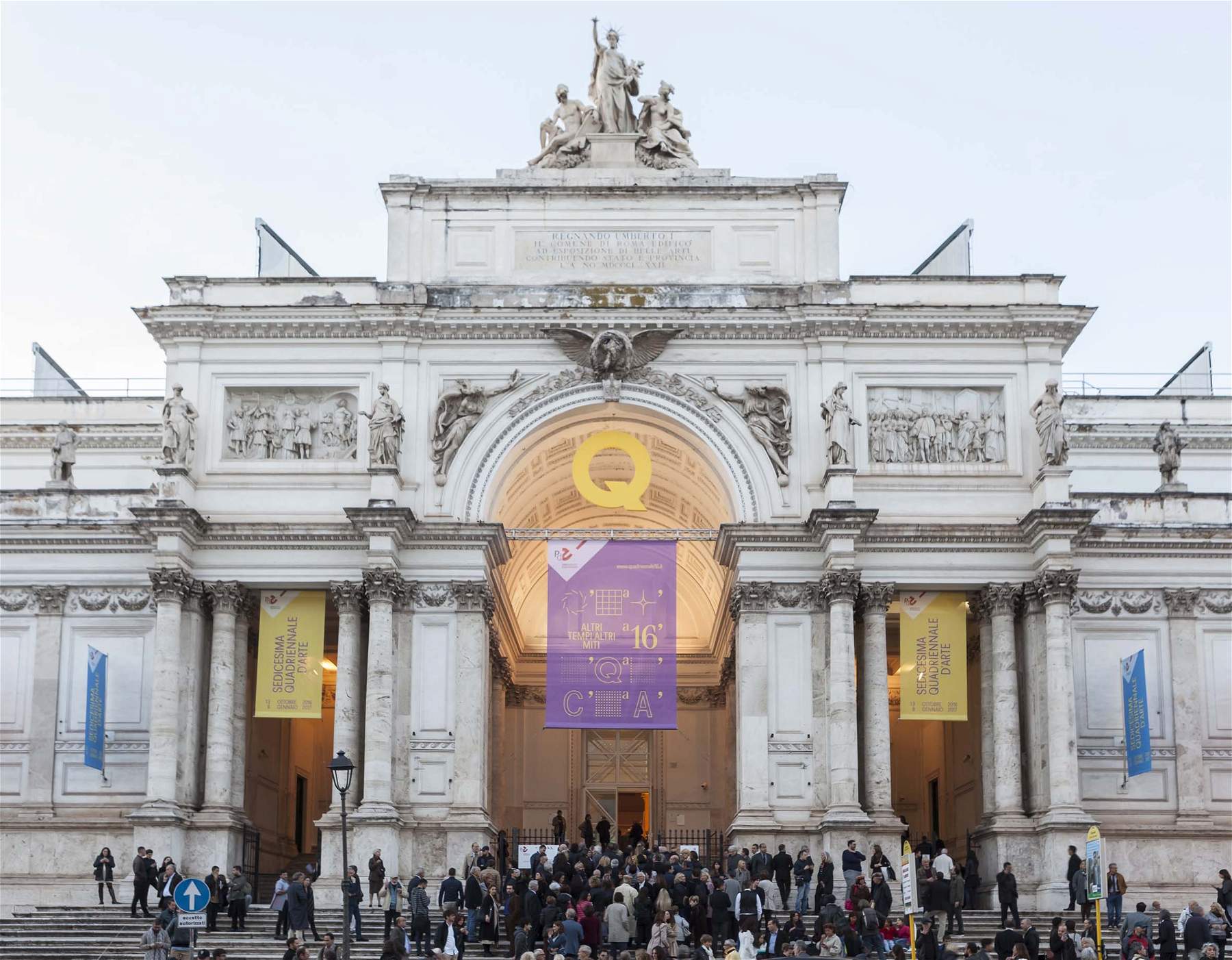The new edition of the Quadriennale di Roma (at the Palazzo delle Esposizioni) will open in October, but in the meantime the Foundation is intensifying its presence on social media with several initiatives, to join the #iorestoacasa campaign.
In particular, available to the public arrive the heritage of the Historical Archive (with images, curiosities, anecdotes about the protagonists of Italian art from the 20th century to the present), and the wealth of knowledge of young Italian artists and curators, giving voice to the participants of Q-Rated, an innovative training project of the last two years.
Four columns in particular are proposed by the Quadriennale’s social, shared on Facebook and Instagram. On Mondays and Tuesdays, it’s the turn of #QYouth: it features historicized Italian artists, now renowned, who participated in the Quadriennali when they were very young (such as Scipione and Guttuso who, in their twenties, participated in the first edition in 1931). On Wednesdays here is #QAcquisitions: it explores the works purchased at the Quadrennial Art Exhibitions by prominent cultural figures of the time, such as Margherita Sarfatti, or by the state itself for the collections of important public institutions, such as the National Gallery of Modern Art in Rome. On Thursdays and Fridays, the column is #TimeMachine, which continues the exploration of the sixteen editions of the Quadriennale d’arte, from the last in 2016 to the first in 1931, with photos of the installations and works on display. Finally, Saturday and Sunday is the turn of #InArchivewithSusi: stories, gossip, curious photographs, costume notes, and fashion from the historical funds of the Quadriennale Library Archive.
In addition, every day there is the content of #pensieriacasa: a video a day with short clips from young Italian artists and curators participating in different editions of Q-Rated who reflect on the current situation with poems, texts, drawings, performances and thoughts, shaping unexpected imaginaries.
“It is a general moment of great mobilization and compacting of the world of culture,” says Umberto Coppi, president of the Fondazione Quadriennale. “Online everyone is sharing their collections, and Quadriennale wants to do its part, with unprecedented avenues of exploration of the incredible materials from its Archives, images and stories that trace the history of twentieth-century Italian art.”
“We live in a moment full of difficulties, doubts and anxieties but rich in opportunities to think, to read, to look,” adds Sarah Cosulich, artistic director of the Quadriennale. “We want to spread the voices of the young artists and curators with whom we have worked over the past two years to continue to make them known and discover how the imaginaries of those who live by art confront a suddenly changed world.”
Pictured: XVI Quadriennale d’arte, 2016-2017, Rome, Palazzo delle Esposizioni, Courtesy Fondazione La Quadriennale di Roma, Photo OKNOstudio
 |
| The Quadrennial of Rome increasingly social: here are its online initiatives |
Warning: the translation into English of the original Italian article was created using automatic tools. We undertake to review all articles, but we do not guarantee the total absence of inaccuracies in the translation due to the program. You can find the original by clicking on the ITA button. If you find any mistake,please contact us.